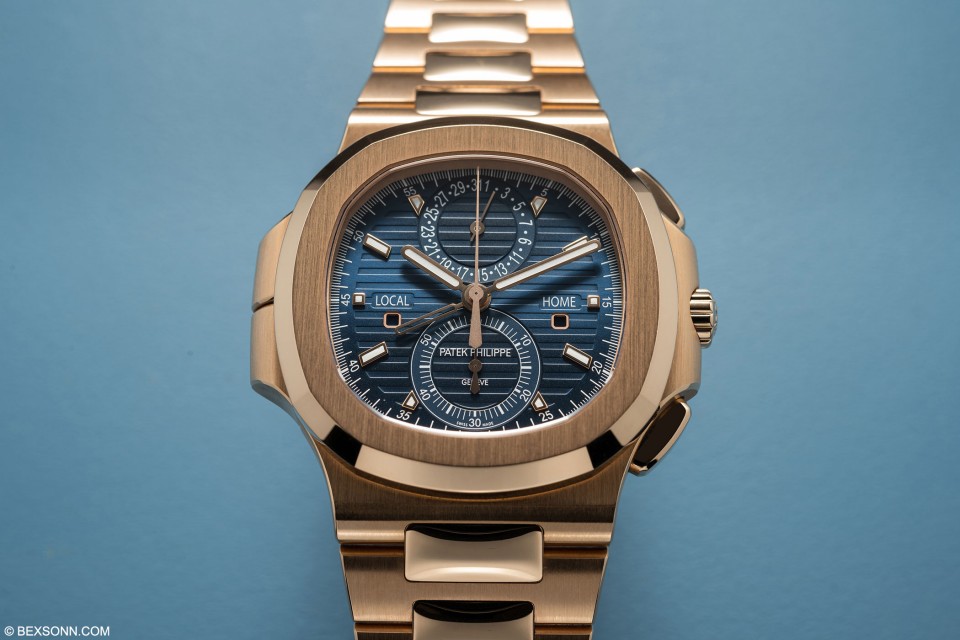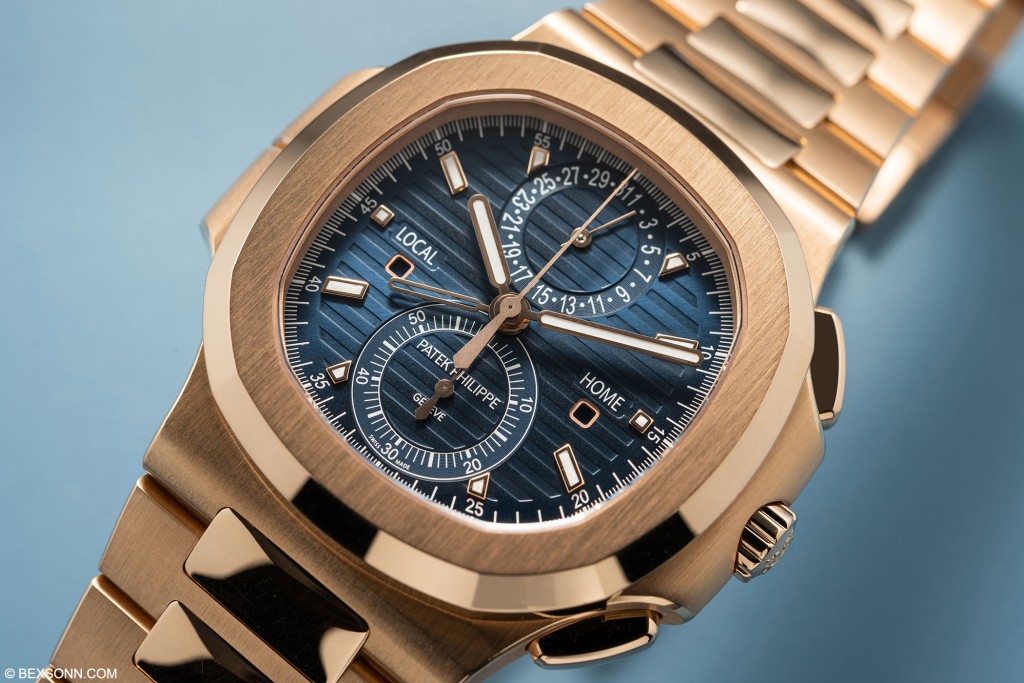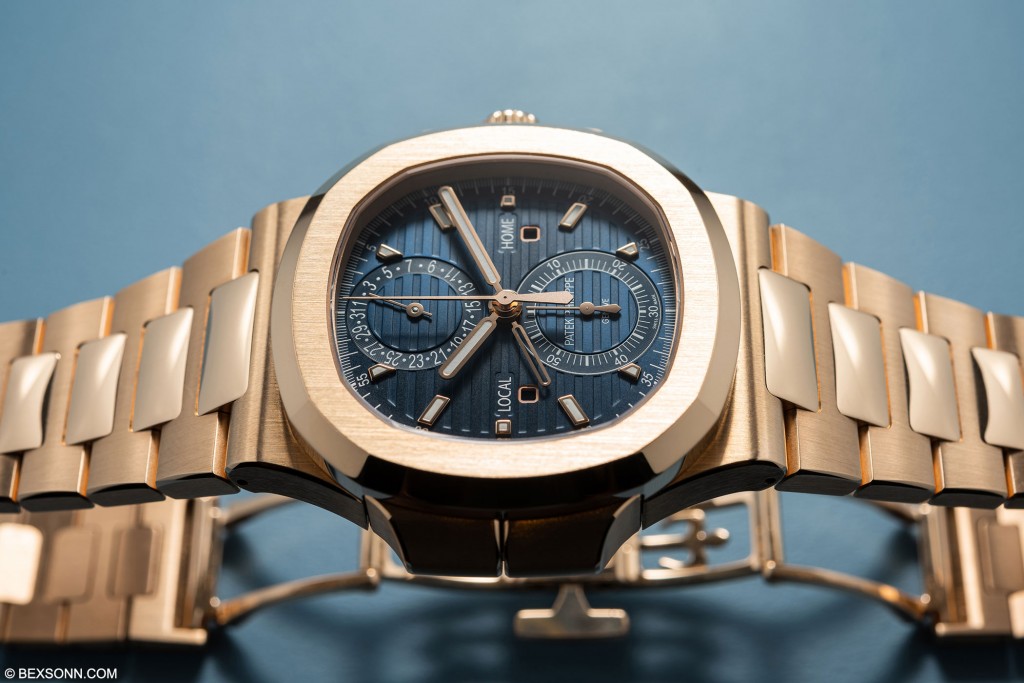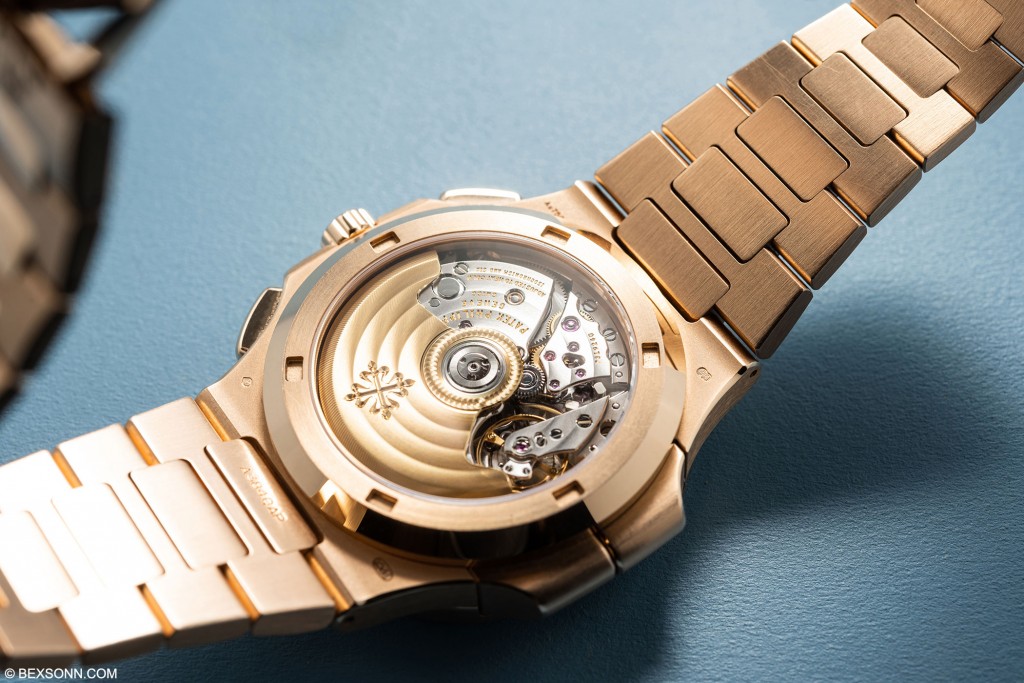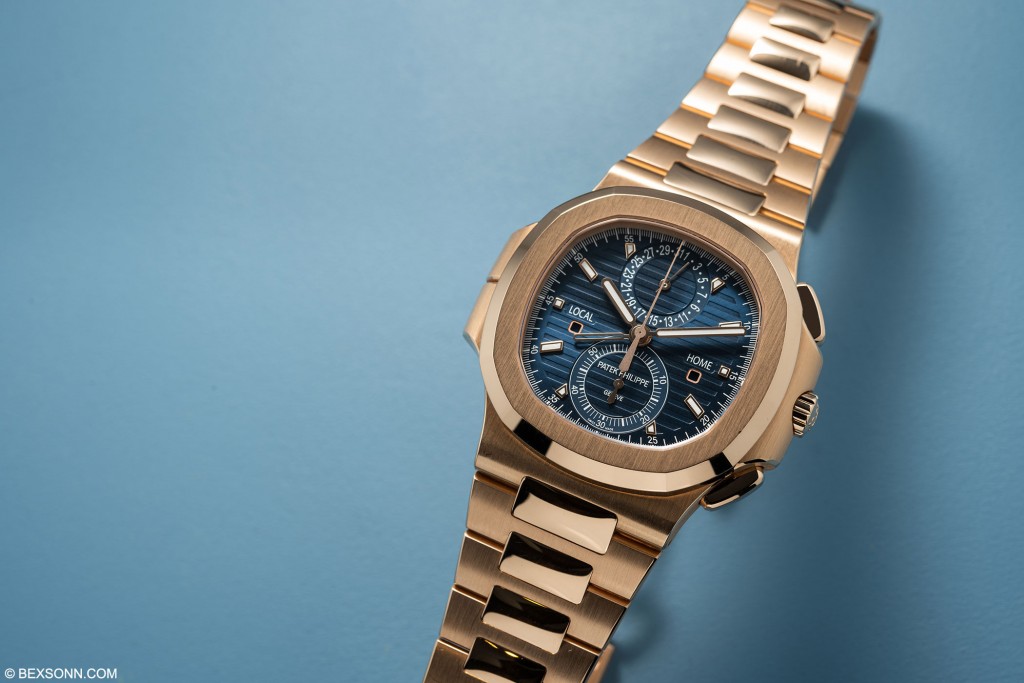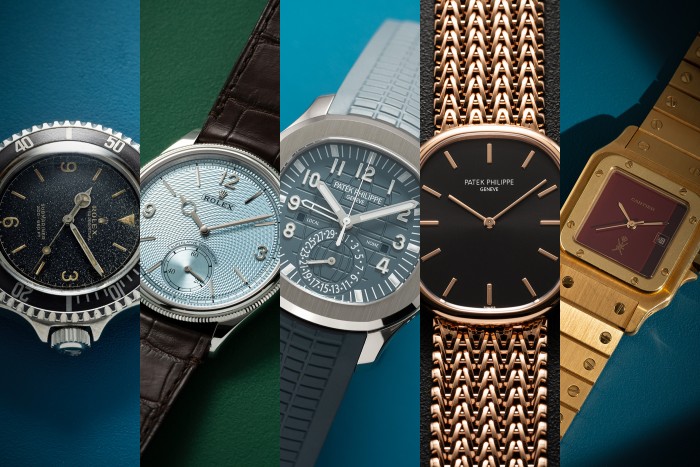Back in 2014, Patek Philippe decided it was time to further expand the Nautilus collection. In 2006 on the occasion of the 30th Nautilus anniversary, Patek introduced a new addition to the range, the Nautilus 5980/1A – which for the first time featured a chronograph complication and in 2013 two updated versions – which came in two metal variations (solid rose gold and stainless steel/rose gold). We thought the updated versions look rather cool but wasn’t overly excited about the bi-metal version, though the blue dial was very striking. Patek expanded on this chronograph version of the Nautilus by adding another practical feature for the frequent traveller.
The Patek Philippe 5990, is perhaps not one for the purists but still, it looks absolutely stunning. While this new addition was still centered around the iconic Gerald Genta porthole design – the movement propelled it into a new era of technical height. The Nautilus was originally made to be simple, elegant and functional. However, the 5990 is rather bold, ultra-modern and possibly divides opinion but we think these main characteristics have been well married by Patek.
Boasting a case that measures 40.5mm, fashioned out of 18-carat solid rose solid: at 2 and 4 o’clock are the two large chronograph pushers, which protrude either side of the crown protector. At 7 and 10 o’clock you’d be forgiven for thinking that the lateral hinges are just that, hinges but in fact these actually serve as the two time zone correctors. The bezel naturally features the usual brushed finish with polished sides, which is in fitting with the polished chronograph pushers. The bracelet features much of the same finish, which is brushed with polished centre links.
The blue brass coup de soleil dial sports the iconic horizontal Nautilus embossed pattern which it shares with its predecessors, with a light-to-dark graduation from the centre to the periphery giving it an subtle but effective colour shift and ten applied luminous hour markers in 18K rose-gold. This colour shift really highlights the sub-dials. At 12 o’clock is an analogue date scale, at 6 o’clock is a 60-minute register for the chronograph. Traditionally, the Patek Philippe logo would’ve been place within the date sub-dial but to lend more visual balance to the dial it has been placed within the 60-minute chronograph counter. You’ll also notice at 9 and 3 o’clock apertures with the inscription of “Local” and “Home” respectively – these are day/night indicators, which were first seen on the Aquanaut Travel Time Ref. 5164A. The second time zone is displayed via a skeletonised hour hand; which when not in use remains hidden beneath the hour hand.
Patek already introduced the chronograph complication, among others, to the Nautilus quite some time ago and of course introduced the “FUS” module to the Aquanaut Travel Time. The calibre CH 28-520 C FUS base movement is still the same chronograph complication but with the addition of the “FUS” module atop. The chronograph mechanism utilises a traditional column wheel design with a disk clutch. The ingenious “FUS” device actually dates back to a patent granted to Patek in 1959. It facilitates bi-directional adjustments of the local time in hour increments. It is isolated from the going train when the time-zone settings are changed, which in turn prevents damage to the balance and helps stabilise the accuracy of the timepiece. Rightly so, the movement is made visible through the sapphire case back allowing you to see the heavy central unidirectional 21-carat gold automatic rotor.
I remember when I was first shown the steel version of this watch many years ago at Baselworld and to me at the time it just seemed insane. It was the Nautilus Travel Time that many wouldn’t have expected from Patek but it has just seemingly slotted into the collection. The practicality of the travel time function is a very useful one, as well as the chronograph function too. That said, it would be nice to see a pure travel time function in a Nautilus – perhaps one for the future? Nonetheless, this new Travel Time Chronograph will of course do well regardless…
The new rose-gold Nautilus Travel Time Chronograph Ref. 5990/1R is priced at £81,970 For more information visit patek.com.
